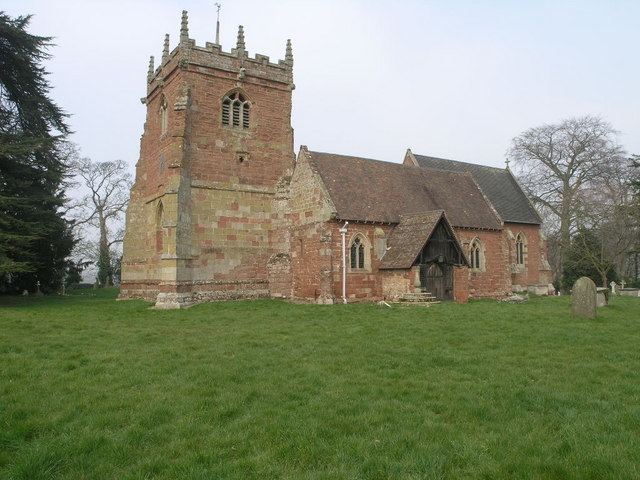OS grid reference SJ 558,050 Country England Website Wenlock Benefice Opened 1891 Archdeaconry Ludlow | Denomination Anglican Functional status Active Architect Samuel Pountney Smith | |
 | ||
Architectural styles Gothic Revival architecture, English Gothic architecture | ||
St peter s church cound he who would valiant be
St Peter's Church is in the grounds of Cound Hall, Cound, Shropshire, England. It is an active Anglican parish church in the deanery of Condover, the archdeaconry of Ludlow, and the diocese of Hereford. Its benefice is united with those of 13 other parishes to form the benefice of Wenlock. The church is recorded in the National Heritage List for England as a designated Grade I listed building.
Contents
History
The church is dedicated to Saint Peter because of its medieval association with Shrewsbury Abbey, which is dedicated to Saints Peter and Paul. The oldest part of the church is the nave, which dates from the 13th century. The south aisle was built at the same time, but rebuilt during the following century. The west tower was added in the 15th century. In 1841 or 1842 the north aisle was built, and the nave and south aisle were restored. In 1862 the chancel was built at the expense of Revd Henry Thursby-Pelham, of Cound Hall. Both the north aisle and the chancel were designed by the Shrewsbury architect S. Pountney Smith. In 1889–91 the north vestry was added, re-using the 13th-century priest's door, the architects being Paley and Austin of Lancaster.
Exterior
The church is constructed in red and yellow sandstone. In the older parts of the building the colours are used randomly, and the 19th-century additions they are deliberately arranged. The roof is tiled. The plan of the church consists of a four bay nave, a three-bay south aisle with a porch, a four-bay north aisle, a four-bay chancel rising to a higher level, and a west tower. The tower is in two stages: it stands on a plinth, and its features include diagonal buttresses, a three-light west window, a northeast stair turret, a clock face on the west side, gargoyles, three-light bell openings, and a battlemented parapet with eight pinnacles. On the summit of the tower is a pyramidal cap with a weathervane. On the side of the south aisle is a doorway and two-light windows; the east window has three lights. The windows along the side of the north aisle also have two lights; at its west end is a rectangular window and, above it in the gable, is a small quatrefoil window. The windows on the side of the chancel have two lights, and its east window is large, with five lights. There is a doorway on the south side of the chancel. In the north vestry are two-light windows and a rose window.
Interior
The arcades are carried on circular piers. In the south aisle are a piscina and an aumbry. The font is Norman, dating from the 12th century; it is tub-shaped and carved with rosettes and foliage. The pulpit is dated 1633, and is carved with colonnettes and panels. The tower screen was formerly in the chancel; it is painted with the Creed, the Lord's Prayer, and the Ten Commandments. In the chancel are re-used medieval tiles. Over the chancel arch is part of a 15th-century wall painting of the Last Judgement. The stained glass includes a small 14th-century figure in the east window of the south aisle. The east window of the chancel contains glass of 1891 by Kempe, and in the south aisle is a window of 1909 by Herbert Bryans. On the walls of the church are monuments, the oldest being dated 1736. On the north wall of the chancel is the monument of Edward Cressett, Bishop of Llandaff, who died in 1755. The two-manual pipe organ was built in the 1890s by Henry Fincham, and overhauled in 1968 by Peter Hutchins. There is a ring of six bells, all cast in 1726 by Abraham Rudhall II.
